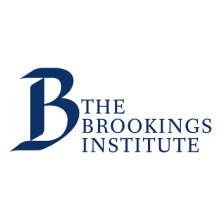
Suddenly talk of scaling and systems change in education seems to be popping up everywhere—and for good reason. Progress toward key educational goals has stalled or even regressed, and education systems have been slow to adopt and integrate disruptive change. As it becomes increasingly clear that planning for scale differs in important ways from typical project planning and from the common five-year education sector plans, it begs the question of what a “scaling strategy” looks like and how best to go about creating one.
The starting point for delivering and sustaining an initiative at large scale is a realistic assessment of the prospects and parameters for scaling, and the challenges that stand in the way, operationally, politically, and financially. This kind of planning also requires careful consideration of exactly what is being scaled, for whom, and by whom.
Not every initiative should be delivered at large scale, but if the aim is to expand and deepen the impact of a particular project, program, innovation, or approach, then designing with scale in mind from the start is a must.
Painful experience makes clear that the prototype-test-rollout model doesn’t work. Scaling cannot be an afterthought to be considered only once results are shown. Instead, designing for scale needs to be considered alongside designing for impact. As Kevin Starr argues, large-scale change requires unwavering attention to who will be the “doers” and who will be the “payers” at scale—right from the start. This is not to say that every initiative should be delivered at large scale, but if the aim is to expand and deepen the impact of a particular project, program, innovation, or approach, then designing with scale in mind from the start is a must.
So, how does one design for scale from the start? In an effort to address this need and drawing on three decades of change management processes in 40 countries, we have identified a set of key planning considerations that are elaborated in the Center for Universal Education’s just-launched “Scaling Strategy Worksheet.”
This worksheet was developed to support an education initiative—or elements of one— as it moves to larger scale. The worksheet guidelines are based on a version originally developed by Management Systems International (MSI)—a Tetra Tech company—which CUE adapted to education and were informed by early work by ExpandNet.
The guidelines are designed to help implementers, policymakers, and funders formulate a concrete, action-oriented scaling strategy that includes:
- Articulating a clear, measurable, and timebound scaling vision that summarizes the need (size and scope), individuals or communities of focus, scaling goal(s), and expected results of delivering the proposed initiative at scale.
- Assessing the credibility and feasibility of the proposed initiative being delivered sustainably at scale, including reviewing the evidence as to whether the initiative represents a feasible and effective approach to solving the targeted problem and is credible to the key stakeholders.
- Ensuring there is recognition of the problem and support for the change by local communities, policymakers, and coalitions.
- Demonstrating relative advantage, including presenting evidence showing that the proposed initiative is more effective and/or efficient than alternative approaches or maintaining the status quo.
- Identifying enabling conditions and partnerships required for sustainable scale, as well as obstacles or potential opposition to consider.
- Determining ease of transferring and applying the initiative at scale, including how it can be adapted to meet the needs of different or expanded populations, as well as what is core to its impact and must be maintained.
- Assessing organizational capacity required to implement at large scale, including identifying where capacity will need to be strengthened and how this will be achieved.
- Articulating financial sustainability plans that describe how resources will be mobilized, budgets considered, and existing systems and structures leveraged at various stages of scale.
- Detailing how the initiative will be monitored as it scales, which requires different methodological approaches than monitoring a pilot or assessing performance at smaller scale. This includes gathering data on the scaling process—whether the initiative is maintaining its effect at larger scale and putting into place a continuous improvement process to determine changes needed along the way.
These scaling guidelines—as well as MSI’s and earlier versions—have been used in more than 30 countries by a wide-variety of actors and have been adopted by a range of donors, including the MacArthur Foundation’s 100&Change competition.
Scaling strategies having a material impact
In Côte d’Ivoire, colleagues at the Ministry of National Education and Literacy facilitated a process bringing together key ministry officials, NGO and funding partners, teachers, and private-sector representatives to develop a strategy for scaling an early grade reading and math intervention. While originally some government officials considered such an exercise unnecessary given existing policy and planning activities, the group found that going through a structured process of responding to specific questions surfaced issues that hadn’t previously been considered and informed plans going forward. In Tanzania, a similar group of diverse stakeholders regularly coming together to learn from and support the process of scaling a life-skills program co-developed a high-level scaling strategy. Through the strategy, they identified that an immediate next step was the need for cost projections for different scaling scenarios and an approach to engage national budgetary officials.
These are but a few examples where intentionally going through a structured process of developing a written scaling strategy can have a significant impact. The idea is not to walk away with a static how-to plan to scale, but rather to catalyze collective thinking among diverse actors involved in scaling an education initiative. What should emerge from these collaborative discussions is a high-level scaling strategy that serves both as a “north star” to guide scaling efforts and as a dynamic planning tool to periodically revisit and update based on new insights, data, and changes in the environment. While developing such a strategy does not guarantee successful and sustainable large-scale change, it is a critical step.


